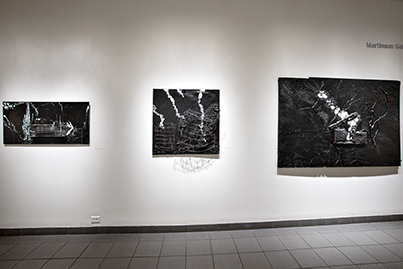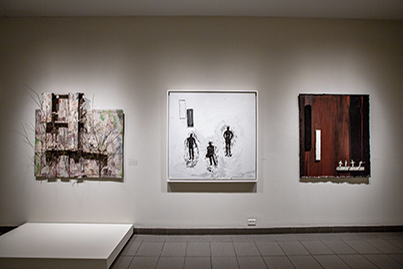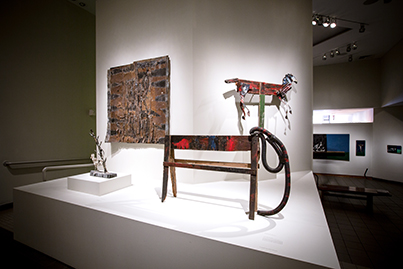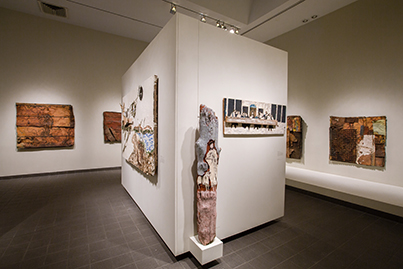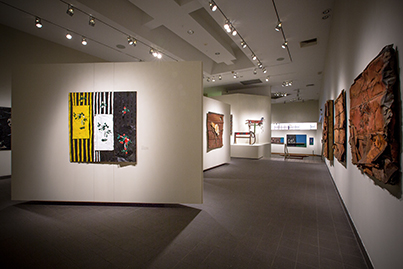Ronald Lockett (1965–1998)
Traps
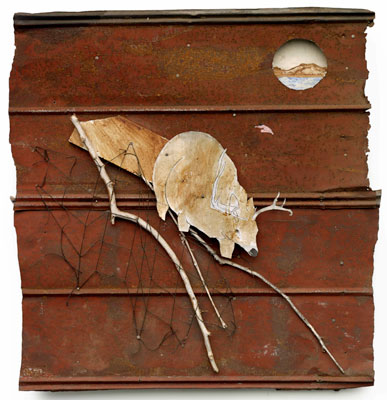


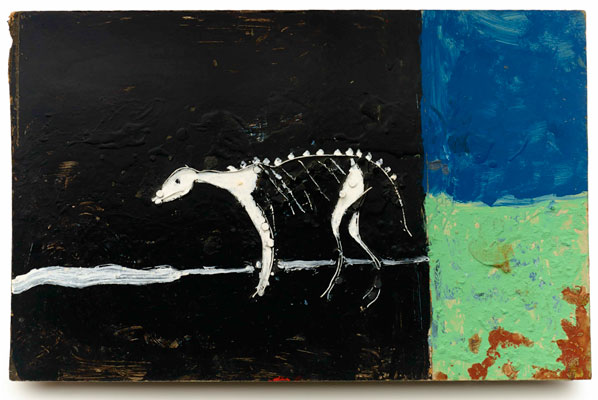
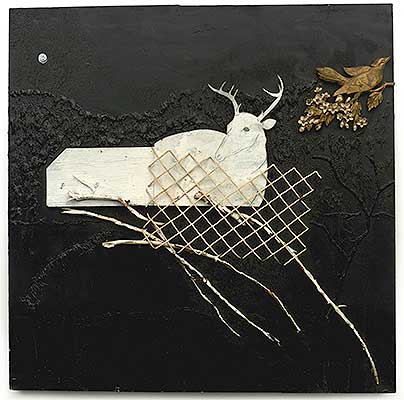
The art of Ronald Lockett (1965–1998) speaks to the universality of the human condition through the lens of lived experience in the American South. Fever Within, the first retrospective on the artist, emphasizes the themes Lockett explored over the course of his decade-long artistic career. Working within the artistic traditions of found materials, he addressed subjects of racial, economic, and political unrest, including the unfulfilled promises of the civil rights movement and environmental degradation.
Born and raised in Bessemer, Alabama, Lockett turned his attention to artmaking full-time in his early twenties. His elder cousin, the artist Thornton Dial (1928–2016), mentored and encouraged him. By the time of his death at age thirty-two from HIV/AIDS-related pneumonia, Lockett had produced more than 350 works. Largely unrecognized in his lifetime, Lockett fits squarely into evolving histories of American art in the late twentieth century.
Curator
Bernard L. Herman, George B. Tindall Distinguished Professor of Southern Studies, Department of American Studies, The University of North Carolina at Chapel Hill
Organizing Curator, American Folk Art Museum
Valérie Rousseau, Curator, Self-Taught Art and Art Brut
The exhibition is on view at the same time as a complement presentation, Once Something Has Lived It Can Never Really Die, which borrows its title from an artwork by Lockett.
Image credits: All artworks by Ronald Lockett (1965–1998) and made in Bessemer, Alabama. Left to right:
Traps, c. 1992, cut tin, found steel, nails, branches, plastic netting, and wood stain; mounted on fiberboard, 50 x 47 x 3″, collection of Tinwood LLC, L2015.15.16. Photo by Stephen Pitkin / Pitkin Studio. © 2016 Estate of Ronald Lockett / Artists Rights Society (ARS), New York
Once Something Has Lived It Can Never Really Die, 1996, wood, enamel, graphite, tin, various found materials, and industrial sealing compound on wood, 57 x 50 1/2 x 4″, collection of Souls Grown Deep Foundation, L2015.2.16. Photo by Stephen Pitkin / Pitkin Studio. © 2016 Estate of Ronald Lockett / Artists Rights Society (ARS), New York
Sarah Lockett’s Roses, 1997, cut tin and paint on wood, 51 x 48 1/2 x 2 1/2″, collection of Souls Grown Deep Foundation, L2015.2.22. Photo by Stephen Pitkin / Pitkin Studio. © 2016 Estate of Ronald Lockett / Artists Rights Society (ARS), New York
Rebirth, 1987, wire, nails, and paint on Masonite, 12 x 18 1/2″, collection of Souls Grown Deep Foundation, L2015.2.3. Photo by Stephen Pitkin / Pitkin Studio. © 2016 Estate of Ronald Lockett / Artists Rights Society (ARS), New York
Traps (Golden Bird), 1990, chain-link fencing, branches, cut tin, industrial sealing compound, and found plastic bird and berries, 48 x 48 x 4″, collection of Tinwood LLC, L2015.15.15. Photo by Stephen Pitkin / Pitkin Studio. © 2016 Estate of Ronald Lockett / Artists Rights Society (ARS), New York
Installation photos by Olya Vysotskaya.
The exhibition is organized and circulated by the Ackland Art Museum, The University of North Carolina at Chapel Hill. It is made possible in part by awards from the William R. Kenan, Jr. Charitable Trust and the National Endowment for the Arts, and additional funding is provided by the Department of American Studies Chair’s Discretionary Fund for Southern Studies at The University of North Carolina at Chapel Hill. The presentation at the American Folk Art Museum is supported in part by Joyce Berger Cowin, the David Davies and Jack Weeden Fund for Exhibitions, the Ford Foundation, Agnes Gund, the Blanche and Irving Laurie Foundation, the Leir Charitable Foundations, the National Endowment for the Arts, the National Endowment for the Humanities: Exploring the human endeavor, public funds from the New York City Department of Cultural Affairs in partnership with the City Council, and the New York State Council on the Arts with the support of Governor Andrew Cuomo and the New York State Legislature. The wall colors are provided by Farrow & Ball. Any views, findings, conclusions, or recommendations expressed in this exhibition do not necessarily represent those of the National Endowment for the Humanities.
The exhibition is organized and circulated by the Ackland Art Museum, The University of North Carolina at Chapel Hill. It is made possible in part by awards from the William R. Kenan, Jr. Charitable Trust and the National Endowment for the Arts, and additional funding is provided by the Department of American Studies Chair’s Discretionary Fund for Southern Studies at The University of North Carolina at Chapel Hill. The presentation at the American Folk Art Museum is supported in part by Joyce Berger Cowin, the David Davies and Jack Weeden Fund for Exhibitions, the Ford Foundation, Agnes Gund, the Blanche and Irving Laurie Foundation, the Leir Charitable Foundations, the National Endowment for the Arts, the National Endowment for the Humanities: Exploring the human endeavor, public funds from the New York City Department of Cultural Affairs in partnership with the City Council, and the New York State Council on the Arts with the support of Governor Andrew Cuomo and the New York State Legislature. The wall colors are provided by Farrow & Ball. Any views, findings, conclusions, or recommendations expressed in this exhibition do not necessarily represent those of the National Endowment for the Humanities.

